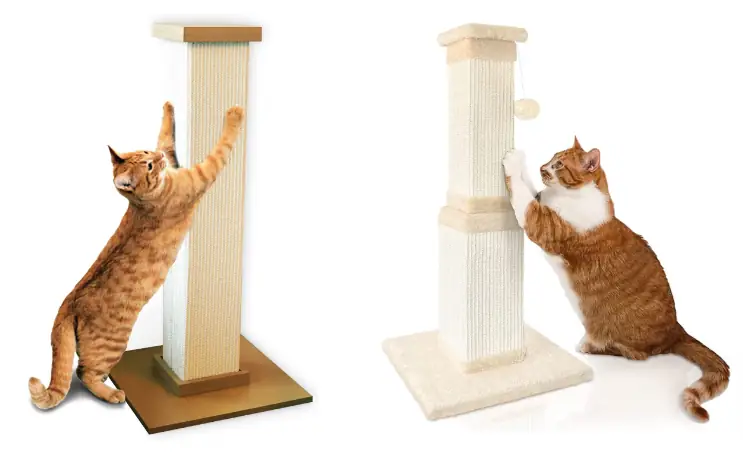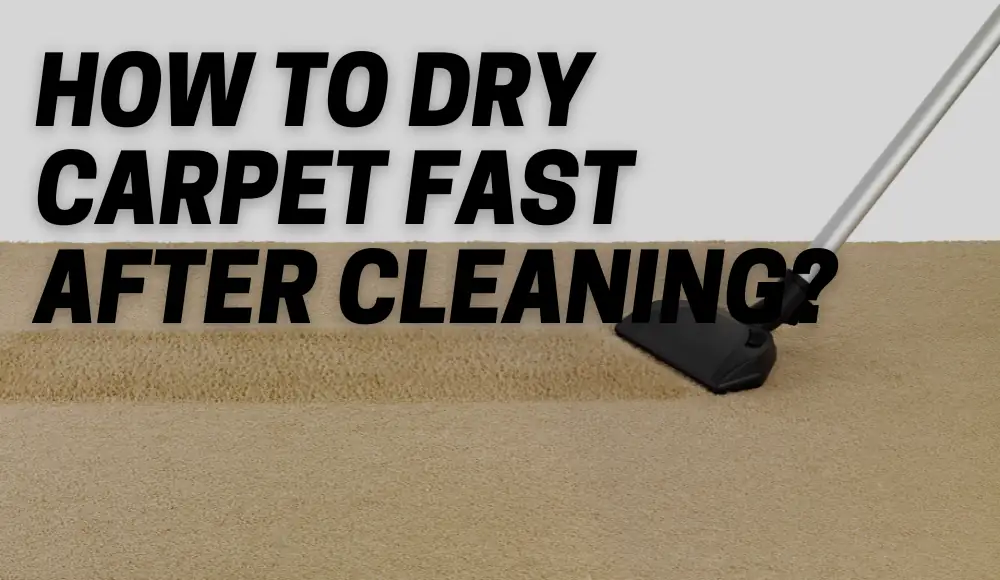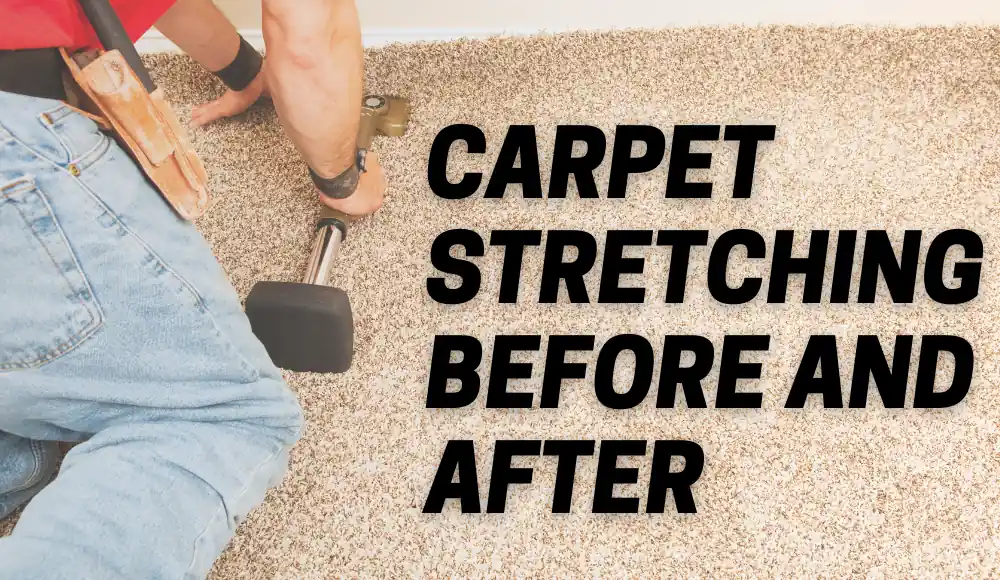Last updated on October 29th, 2023 at 02:18 am
In the realm of pet ownership, the love and companionship we receive from our feline friends often outweigh the occasional challenges that come with it. One such challenge that cat owners commonly face is the relationship between cats and carpet floors.
You might have found yourself pondering, “Do cats like carpet floors?” or wondering why your furry companion seems particularly drawn to them. In this comprehensive guide, we will delve into these questions and provide expert insights to help you understand and address this intriguing aspect of cat behavior.
Do Cats Like Carpet Floors?
Cats have a reputation for being enigmatic creatures, and their preferences for flooring are no exception. While cats may not have a direct preference for carpeted floors over other types, several factors influence their behavior.
Cats are known for their instinctive desire to scratch and mark their territory. The texture of the carpet can be particularly enticing for this purpose, and its warmth and comfort might make it a cozy spot for napping. Therefore, it’s not so much about a preference for carpet floors but rather the appeal of certain aspects.
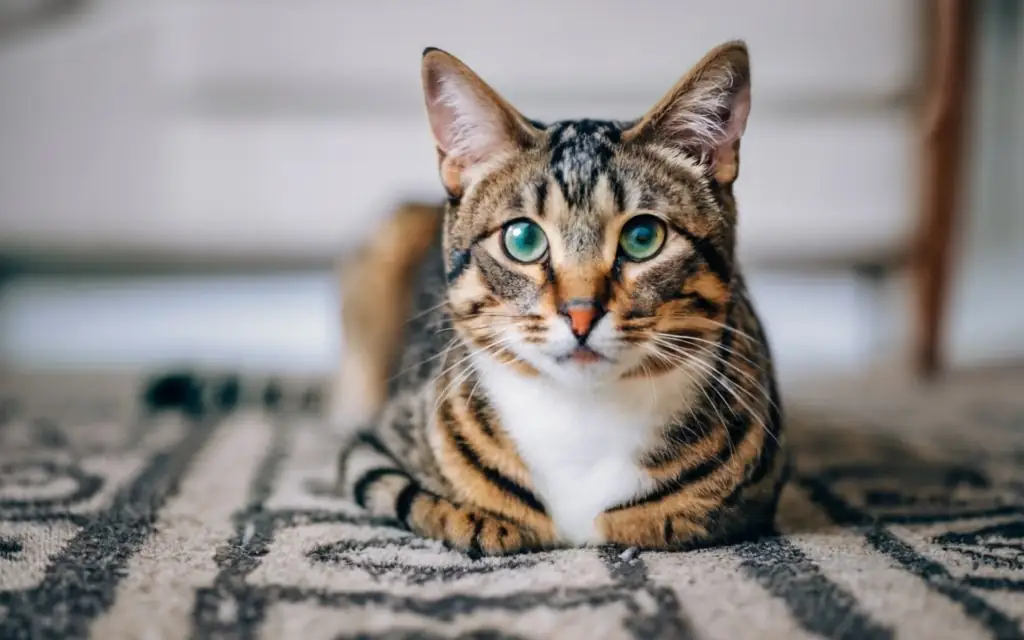
Why Does My Cat Like Carpet So Much?
Factors to Consider:
- Texture: The texture of carpet is ideal for scratching and stretching their claws. Cats often scratch to shed the outer layer of their claws and mark their territory.
- Warmth: Carpets are naturally warmer than hardwood or tile floors, making them inviting for cats to lounge on, especially in cooler climates.
- Comfort: The softness and cushioning of carpet provide a comfortable surface for rest and play, offering a gentle landing for those acrobatic leaps.
It’s important to understand that these factors can vary from cat to cat. Some cats may be more drawn to the texture, while others may appreciate the warmth or comfort.
Are There Different Types of Carpet That Cats Prefer?
Carpet Varieties: While cats don’t necessarily have specific preferences for carpet types, some carpets may be more cat-friendly than others. For instance, low-pile carpets are less likely to trap claws and are easier to clean. Additionally, carpets with stain-resistant properties can be beneficial in households with cats prone to accidents.
To cater to your feline companion’s needs, consider the practicality of the carpet when choosing one for your home.
How Can I Make My Carpet More Cat-Friendly?
Cat-Proofing Your Carpet: Making your carpeted floors more appealing and comfortable for your cat can be a rewarding endeavor. Here are some tips:
- Provide Scratching Posts: Offer designated scratching posts to redirect your cat’s scratching instincts away from the carpet.
- Interactive Play: Engage your cat in interactive play to keep them mentally and physically stimulated.
- Regular Grooming: Keeping your cat’s claws trimmed can minimize damage to your carpet.
- Anti-Scratch Deterrents: Consider using cat-friendly deterrent sprays to protect your carpet.
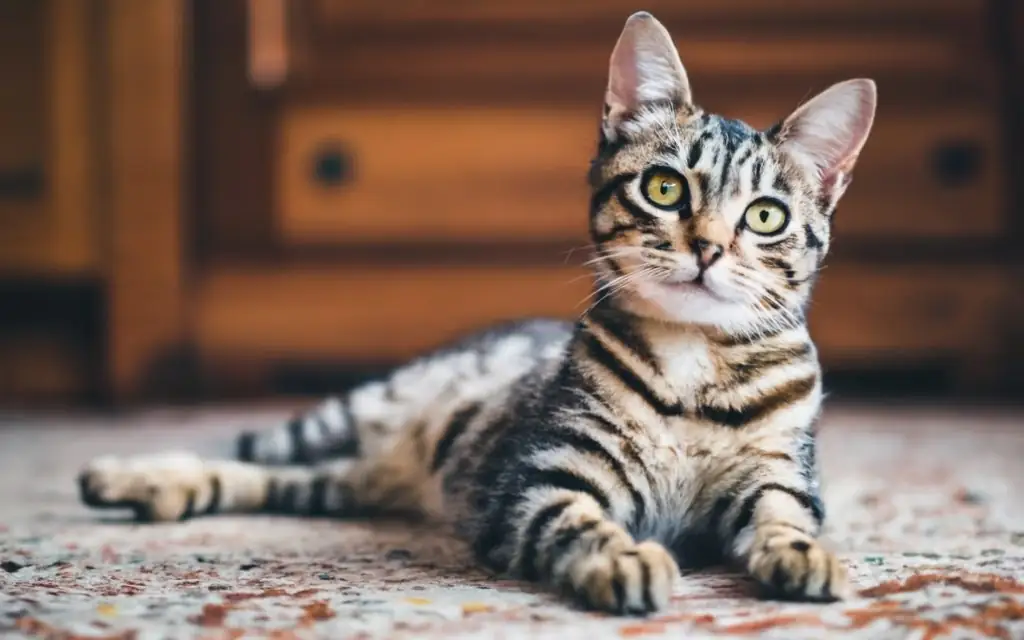
Do Cats Scratch Carpet Floors?
Understanding Cat Behavior: Cats are natural scratchers, and they may scratch carpet floors for various reasons, including marking their territory, sharpening their claws, and stretching their muscles.
Preventing Damage: To prevent damage, providing alternatives like scratching posts and regularly trimming your cat’s claws can be effective strategies. Anti-scratch products and training can also help protect your carpet.
Are There Cat-Friendly Carpets?
Choosing the Right Carpet: Some carpets are designed to withstand the wear and tear of cats. Carpets with stain-resistant properties are a good choice, as they make it easier to clean up after accidents. Look for carpets made from durable materials that can handle your cat’s playfulness.
Expert Data: Types of Carpet for Cat-Friendly Homes
| Carpet Type | Attributes |
|---|---|
| Low-Pile Carpet | Less likely to trap claws, easier to clean. |
| Stain-Resistant Carpet | Resists stains, making it easier to clean. |
| Durable Materials | Carpets made from sturdy materials are cat-friendly. |
How to Clean Cat-Related Stains and Odors from Carpets
Dealing with Messes: Accidents happen, and it’s essential to know how to clean pet-related stains and odors from your carpet.
- Blot, Don’t Rub: When cleaning stains, blot the area gently to avoid pushing the stain further into the carpet fibers.
- Use an Enzymatic Cleaner: Enzymatic cleaners are effective in breaking down pet-related odors.
- Steam Cleaning: Periodic professional steam cleaning can help maintain the freshness of your carpet.
Tips for Protecting Carpets from Cat Claws
Preventive Measures: To protect your carpets from cat claws, consider these tips:
- Scratching Posts: Provide appropriate scratching posts.
- Nail Trimming: Regularly trim your cat’s claws.
- Anti-Scratch Products: Use deterrents designed to discourage scratching.
What Is the Best Flooring Option for Cats?
Alternative Flooring Options: If you’re concerned about your carpets, consider alternative flooring options:
- Hardwood Floors: Easier to clean and less prone to trapping odors.
- Tile Floors: Durable and scratch-resistant.
- Vinyl Flooring: Provides a balance of durability and comfort.
Choosing the right flooring option depends on your cat’s behavior and your household’s specific needs.
Cat-Friendly Flooring in Different Rooms
When it comes to cat-friendly flooring, it’s essential to consider the specific needs of different rooms in your home. Cats are known for their curiosity and varied activities, so selecting the right flooring for each space is crucial. Let’s explore the best flooring options for various rooms in a cat-friendly household:
Living Room
Recommended Flooring: Hardwood or laminate flooring is an excellent choice for living rooms. It offers a sleek, modern look and is easy to clean. These types of flooring can withstand moderate cat traffic and are less prone to odors compared to carpet.
Additional Considerations: Place soft area rugs in the living room to provide a cozy spot for your cat to rest or play. Regular vacuuming and sweeping can help maintain the cleanliness of hardwood floors.
Kitchen
Recommended Flooring: Tile flooring is a top pick for kitchens. It’s durable, water-resistant, and easy to clean, which is essential in an area where spills and messes are common. Cats are less likely to cause damage to tile, making it a practical choice.
Additional Considerations: To protect your cat’s paws and keep them comfortable, consider placing mats near food and water bowls. Cats can be messy eaters, and mats can help contain the mess.
Bedroom
Recommended Flooring: Carpeting can be a suitable choice for bedrooms as it provides warmth and comfort for both you and your cat. However, opt for low-pile carpets, which are less likely to trap claws and are easier to clean.
Additional Considerations: Place a scratching post in the bedroom to redirect your cat’s scratching instincts away from the carpet. Regular grooming can also help minimize shedding and reduce allergens in the bedroom.
Bathroom
Recommended Flooring: Tile or vinyl flooring is ideal for bathrooms due to their water resistance and easy maintenance. Cats may be drawn to the bathroom due to the cool, smooth surface of the floor.
Additional Considerations: Keep toilet lids closed to prevent your cat from drinking toilet water or playing in it. Provide a comfortable spot for your cat to perch and observe from a safe distance.
Home Office
Recommended Flooring: Hardwood, laminate, or even cork flooring can work well in a home office. These options are durable and can withstand the occasional scratching or playfulness of your cat.
Additional Considerations: Ensure your office setup includes a cozy spot for your cat to lounge while you work. Cats often enjoy being near their human companions, so providing a comfortable space in your home office can keep them content.
Basement
Recommended Flooring: In the basement, consider using concrete or vinyl flooring. These options are moisture-resistant and easy to clean, making them suitable for a cat-friendly space.
Additional Considerations: Basements can be dark, so install proper lighting to create a pleasant atmosphere for your cat. Providing toys and scratching posts can keep them engaged in this often-underutilized area.
Entryway and Mudroom
Recommended Flooring: Tile or vinyl flooring is ideal for entryways and mudrooms. These areas are prone to dirt, moisture, and outdoor debris, and these flooring options are easy to clean and maintain.
Additional Considerations: Keep a welcome mat near the entrance to help prevent your cat from tracking outdoor dirt and debris throughout the house. Having a designated cleaning station for your cat’s paws can be useful.
When selecting flooring for various rooms, ensure it aligns with your cat’s needs and behavior while also considering the functionality and aesthetics of each space. This comprehensive approach will help you create a harmonious living environment for both you and your feline companion.
How to Train Cats to Use Carpet Scratching Posts
Training Techniques: Training your cat to use designated scratching posts can help protect your carpets. Here are some tips:
- Positive Reinforcement: Reward your cat when they use the scratching post.
- Catnip: Use catnip to entice your cat to the post.
- Deterrents: Place deterrents on areas you want to protect from scratching.
Cats and Allergies: How Carpets Impact Allergies
Allergen Trapping: Carpets can trap allergens like cat dander, making it challenging for cat owners with allergies.
Allergy Management: To manage allergies, consider investing in a good-quality air purifier and vacuum cleaner designed for pet owners. Regular cleaning and grooming of your cat can also help reduce allergen levels.
Safety Concerns: Cat Hair and Carpets
Managing Cat Hair: Cat hair can be a concern in carpeted homes. To address this issue:
- Regular Vacuuming: Vacuum your carpets regularly to remove cat hair.
- Grooming: Brush your cat to reduce shedding.
- Air Purification: Use an air purifier to help keep the air clean.
Can Cats Live in a House with Carpet?
Cats can certainly live in a house with carpet, but it requires some consideration. With the right choices and preventive measures, you can create a comfortable and cat-friendly environment that accommodates both your cat’s instincts and your home’s flooring.
Is There a Carpet That Cats Won’t Claw?
While no carpet is entirely immune to scratching, low-pile carpets are less likely to trap claws and are generally a better choice for cat owners. Regular grooming, training, and providing scratching posts can also help mitigate scratching.
Do Cats Like Carpet or Hardwood Floors?
Cats’ preferences for flooring can vary from one cat to another. Some may enjoy the warmth and comfort of carpet, while others may prefer the smoothness of hardwood floors. Understanding your cat’s individual preferences is key.
Cat friendly flooring
| Flooring Type | Durability | Ease of Cleaning | Comfort | Safety |
|---|---|---|---|---|
| Hardwood Flooring | Sturdy, moderate scratching resistance | Wipeable, watch for moisture | Smooth and comfortable | Non-toxic finishes, well-sealed |
| Laminate Flooring | Highly scratch-resistant, budget-friendly | Easy to clean, less susceptible to stains | Comfortable enough | Look for low-VOC options |
| Tile Flooring | Highly scratch-resistant, moisture-resistant | Effortless to clean, no concerns about stains | Install area rugs or mats for comfort | Generally safe, avoid glossy finishes |
| Vinyl Flooring | Highly scratch-resistant, budget-friendly | Easy to clean, moisture-resistant | Comfortable, less cold than tile | Choose low-VOC options |
| Bamboo Flooring | Relatively scratch-resistant, harder than most hardwoods | Easy to clean, doesn’t trap odors | Comfortable and sustainable | Opt for formaldehyde-free options |
| Cork Flooring | Naturally resilient, withstands light scratching | Easy to clean, less likely to trap odors | Comfortable, with some cushioning | Safe and non-toxic |
Each flooring option has its unique characteristics and considerations, and the choice depends on your specific needs and preferences.
Best Flooring for Cats with Claws
When it comes to selecting the best flooring for cats with claws, it’s essential to consider durability and ease of maintenance. Hardwood, tile, and vinyl flooring are solid options for cat owners, given their resilience against scratching and ease of cleaning.
Cork Flooring and Cats
Cork flooring is an eco-friendly option with some resistance to scratching, making it a viable choice for cat owners. However, it’s crucial to maintain your cat’s claws and provide scratching alternatives to preserve the floor’s integrity.
In conclusion, cats and carpet floors can coexist harmoniously with the right strategies and understanding of feline behavior. While carpet can be attractive to cats for various reasons, cat owners can take measures to protect their flooring and ensure a comfortable living space for their beloved companions.
For further insights and information, refer to authoritative sources such as American Veterinary Medical Association and The Humane Society.
With the knowledge and expertise provided in this guide, you can create a cat-friendly home while maintaining the beauty and comfort of your carpeted floors.

